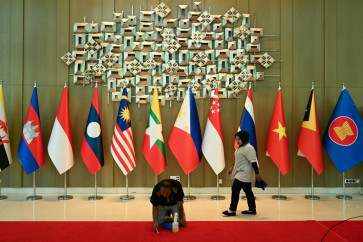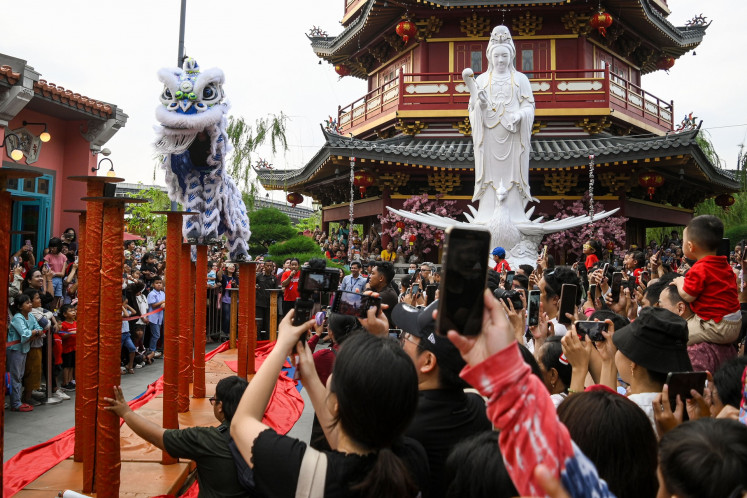Big tobacco seeks to entice women: Report
The tobacco industry is trying to ride the wave of women’s empowerment that is celebrated globally every March, as women and girls, especially in Southeast Asia, are increasingly targeted as an emerging market, a recently published report shows
Change text size
Gift Premium Articles
to Anyone

T
he tobacco industry is trying to ride the wave of women’s empowerment that is celebrated globally every March, as women and girls, especially in Southeast Asia, are increasingly targeted as an emerging market, a recently published report shows.
According to the Southeast Asia Tobacco Control Alliance (SEATCA), a Bangkok-based NGO, the tobacco industry is finding new ways of promoting its products to appeal to women and girls, including flavored filters and capsules as well as new shapes, colors and perceived strength or mildness.
“Internal tobacco industry documents reveal that the tobacco industry is notorious for targeting women and girls through advertisements and novel products that promote social desirability, independence, sophistication, glamor, romance, fun and weight control,” said Mary Assunta, senior policy advisor at SEATCA, in a statement published last week.
In some countries, including Indonesia, Malaysia and Singapore, some brands sell cigarettes in super slim “lipstick packs”, which are meant to influence beliefs about smoking and weight control, the report says. Other innovative features, such as “less-smoke smell” technology, are used to reduce secondhand smoke and odors.
Flavor capsules — placed within cigarettes to be crushed to release additional flavors — have also grown popular, while packaging with eye-catching colors aim to differentiate cigarettes based on flavor, strength and smoothness, sometimes giving people the false impression of being milder or having lower tar content, the report finds.
There are also signs that the industry is trying to take advantage of changes in social values, said Nina Samidi, communications manager of Indonesia’s National Commission on Tobacco Control.
“In the past, it was considered taboo for women to smoke, [but] now it’s time for gender equality and women power,” she told The Jakarta Post over the weekend. “From here, it becomes an opportunity for the industry.”
At 4.8 percent, the prevalence of smoking among the female population in Indonesia is significantly lower than among the male population (62.9 percent), according to the nationwide Basic Health Survey (Riskesdas) from last year.
Since the 2016 survey, the smoking prevalence among women and girls has risen by 2.3 percentage points, although the average has hovered around 4.6 percent since 2007. “This is the gap the industry wants to take advantage of […]; they are always on the lookout for new targets,” Nina said, noting that the industry was trying to figure out how to get women’s attention.
“The tobacco industry sells an image, so they are figuring out what kind of image women want, [such as] gender balance or freedom for women.”
Even as the smoking prevalence among the female population remains relatively low, the research by SEATCA shows that the prevalence of smoking is higher among adolescent girls than among adult women, especially in the Philippines (9.1 percent vs. 5.8 percent), Malaysia (2.4 percent vs. 1.4 percent) and Thailand (5.2 percent vs. 1.7 percent).
This is in line with the trend of early smokers in Indonesia: The 2018 health survey found that the prevalence of smokers aged 10 to 18 years was 9.1 percent, even though the government has targeted a reduction in the number of early smokers to 5.2 percent in the 2015-2019 National Medium-Term Development Plan (RPJMN).
Despite the gloomy outlook, regional initiatives are already underway to buck the trend.
ASEAN countries are to meet later this month to discuss the progress of targets set under the ASEAN Health Cooperation Governance and Implementation program, said Riaz Saehu, director for ASEAN sociocultural cooperation at the Indonesian Foreign Ministry. Under Health Cluster 1 of the program, member states are required to ensure that the industry cannot interfere in tobacco control policies.
One of the program’s indicators requires member states to ban tobacco advertisements by 2020 at the national level. Indonesia is the only ASEAN country that has not yet placed a total ban on tobacco companies from advertising in the media.









